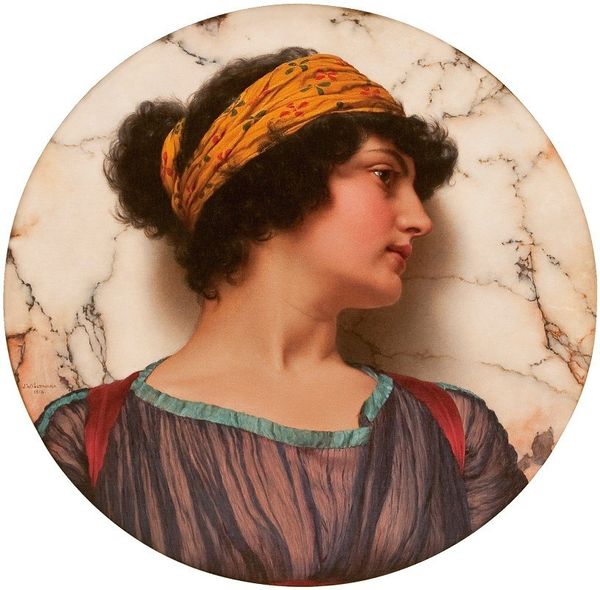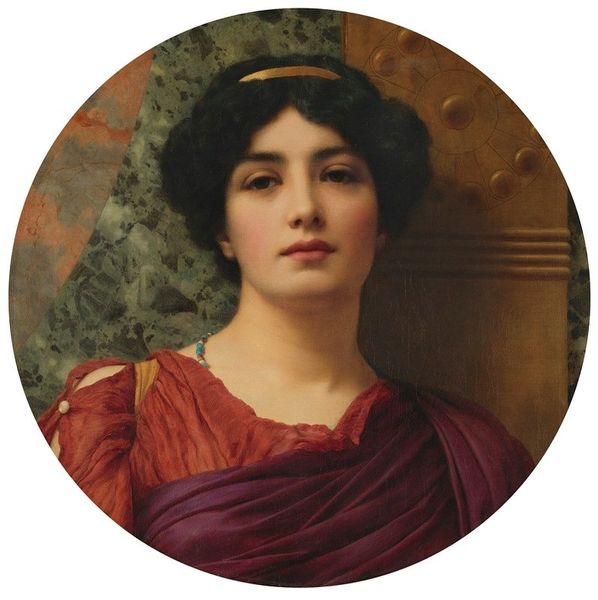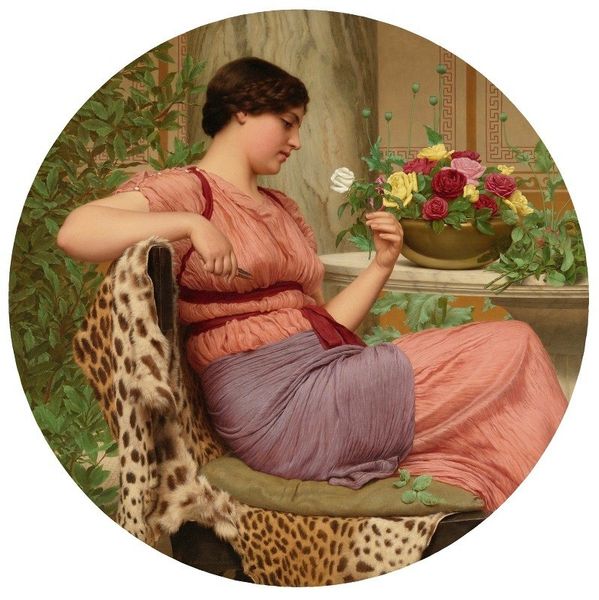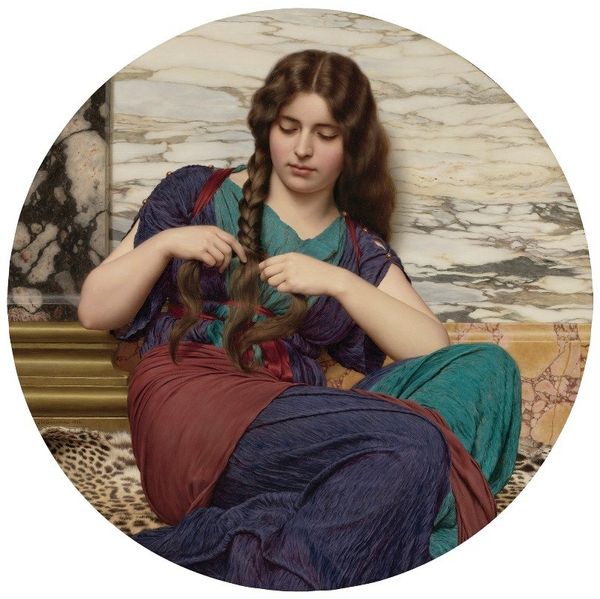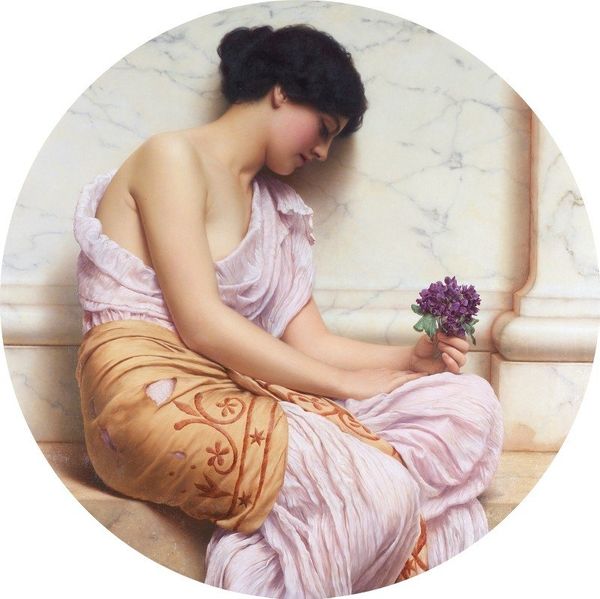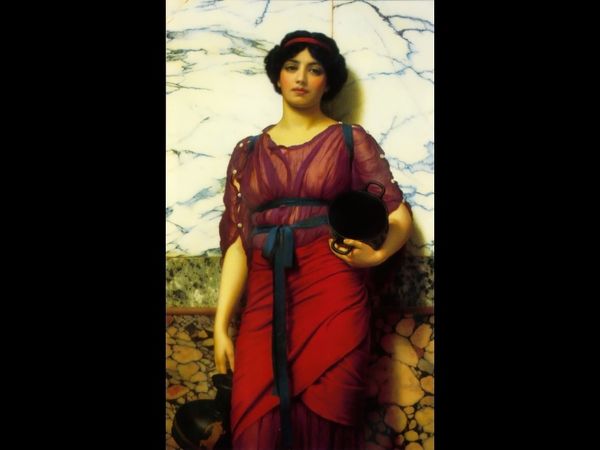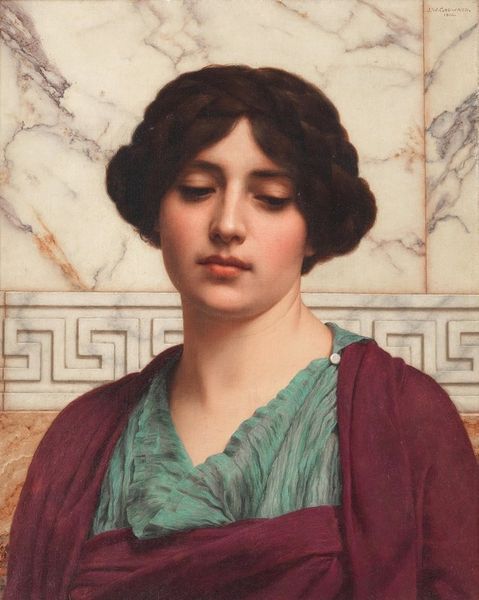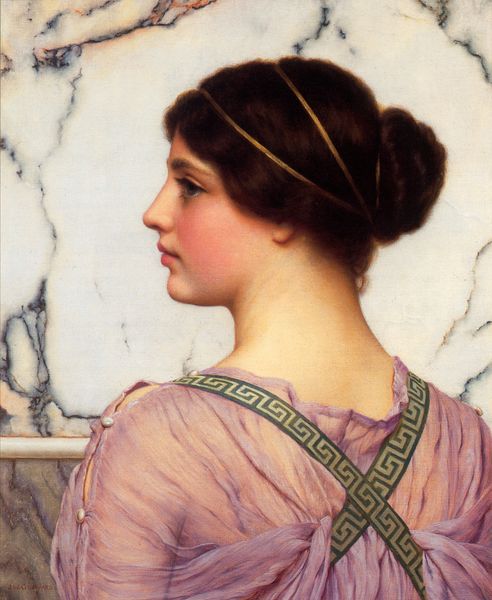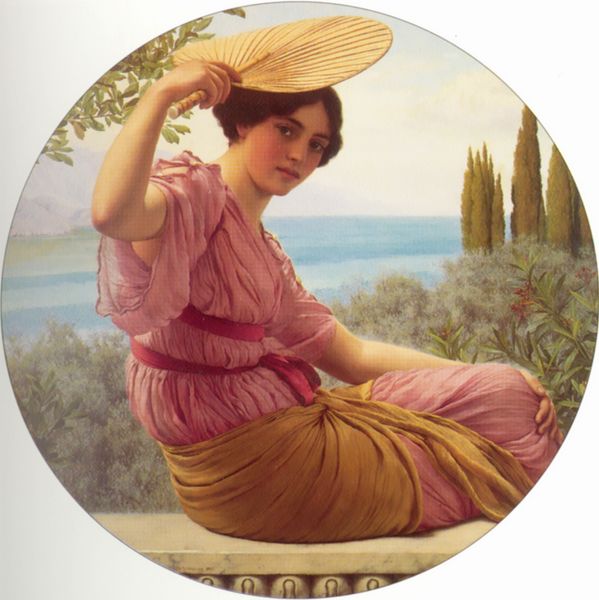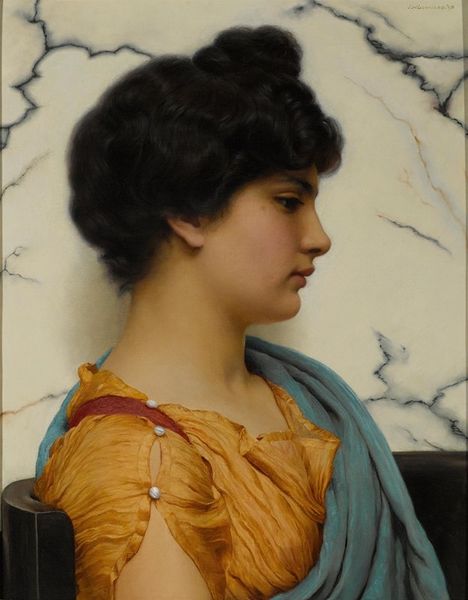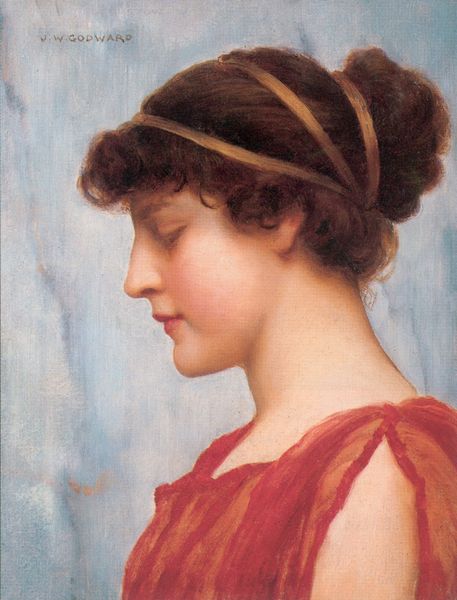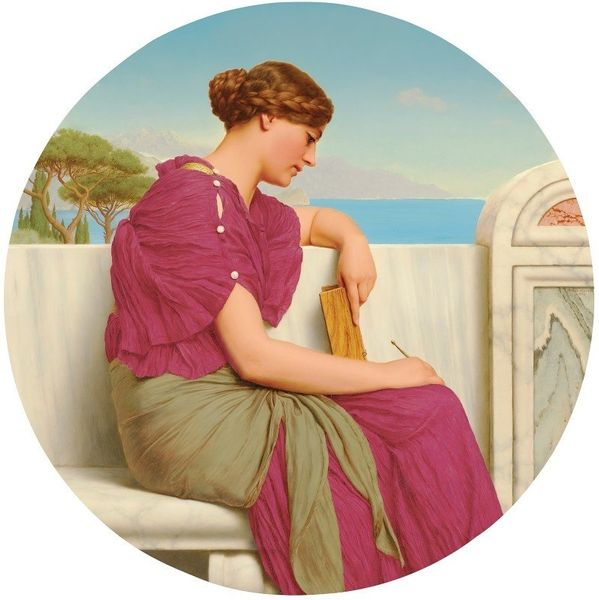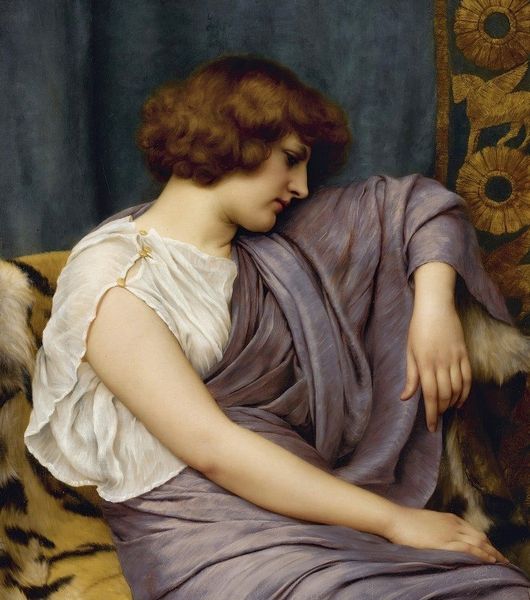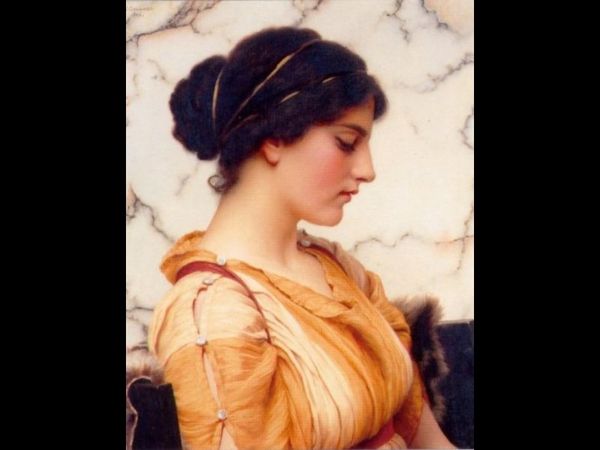
Copyright: Public Domain: Artvee
Editor: This is John William Godward's "The Love Letter," painted in 1907. It's oil on canvas, and the way the light catches on her dress is just stunning. She looks contemplative, almost melancholy. What do you see in this piece? Curator: It’s tempting to get lost in the aesthetic beauty, isn't it? Godward and his contemporaries painted these romanticized visions of the classical world, but it’s crucial to remember the context. Who is afforded the leisure to contemplate love letters, draped in sheer fabrics against marble? This is a fantasy of femininity built on systemic inequalities. Editor: So, it's not just a pretty picture? Curator: Exactly. Consider the male gaze inherent in these depictions. How often are women, particularly women of color, granted this same idealized portrayal? Are we seeing an exploration of emotion or a reinforcement of power dynamics? The aesthetic is beautiful, but we have to question who that beauty serves and at what cost. How does this "classicism" connect with colonial ideals? Editor: That's a powerful point. I was so focused on the beauty that I missed the power dynamics. It does feel very... sanitized, in a way. Curator: Precisely. And who decided what “sanitized” or “civilized” looks like? Examining these romanticized depictions critically can teach us a great deal about the historical biases embedded in the art world and the broader culture. Editor: I definitely have a lot to think about. I guess I was too quick to accept the image at face value. Thanks for helping me look beneath the surface. Curator: My pleasure. Art is never just "art," it’s always entangled in the web of power, history, and representation. That’s what makes it so compelling.
Comments
No comments
Be the first to comment and join the conversation on the ultimate creative platform.
